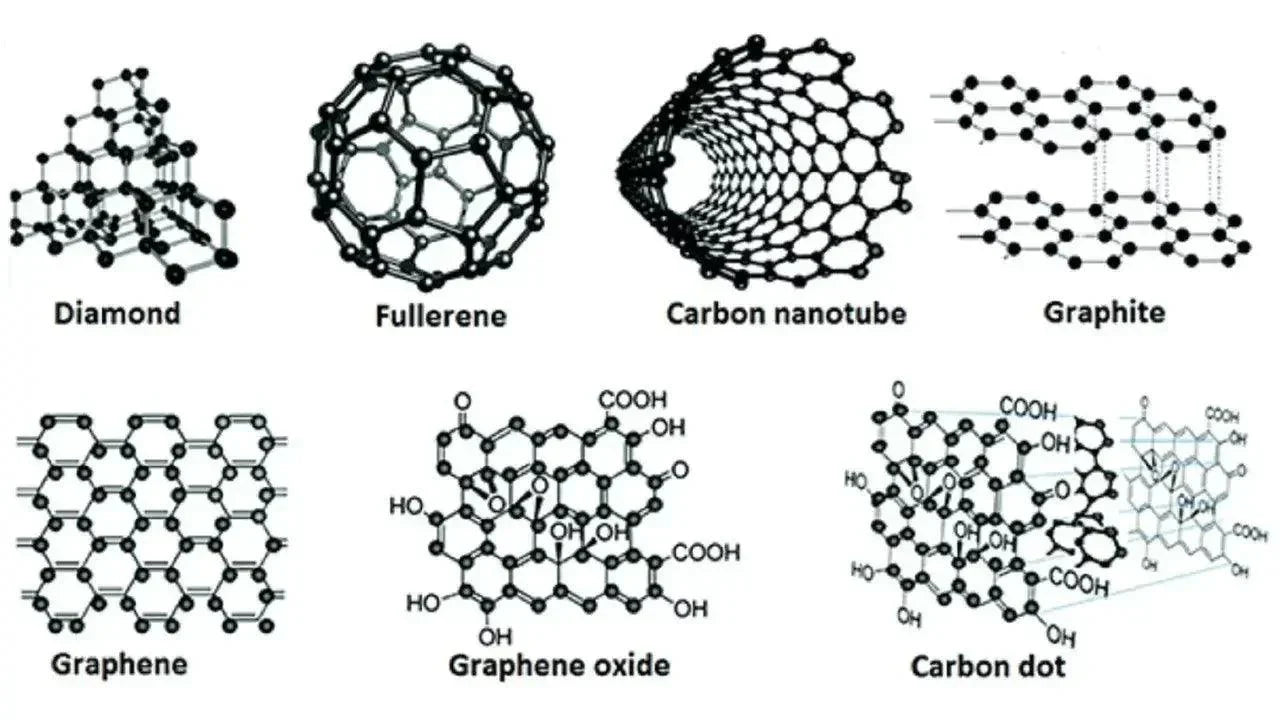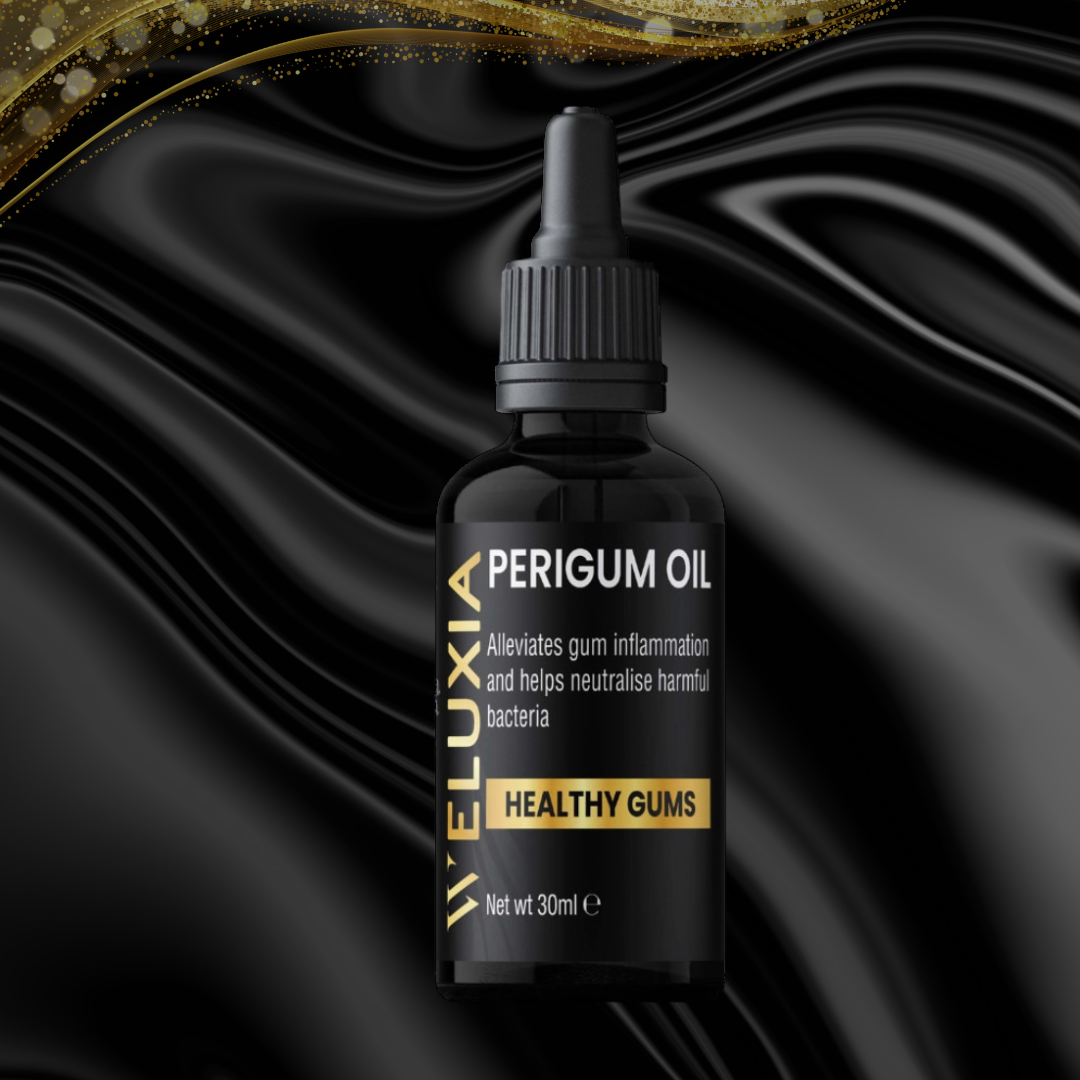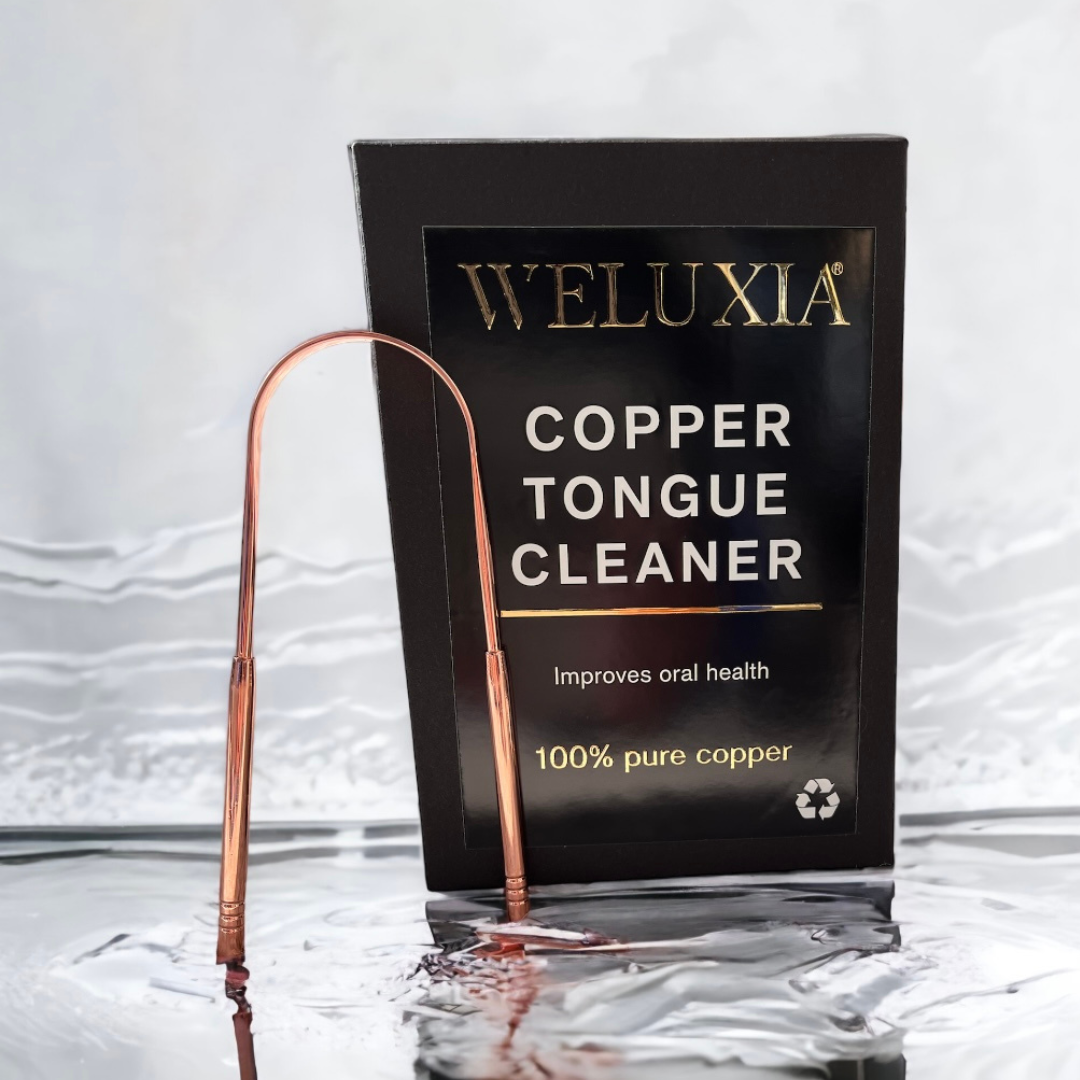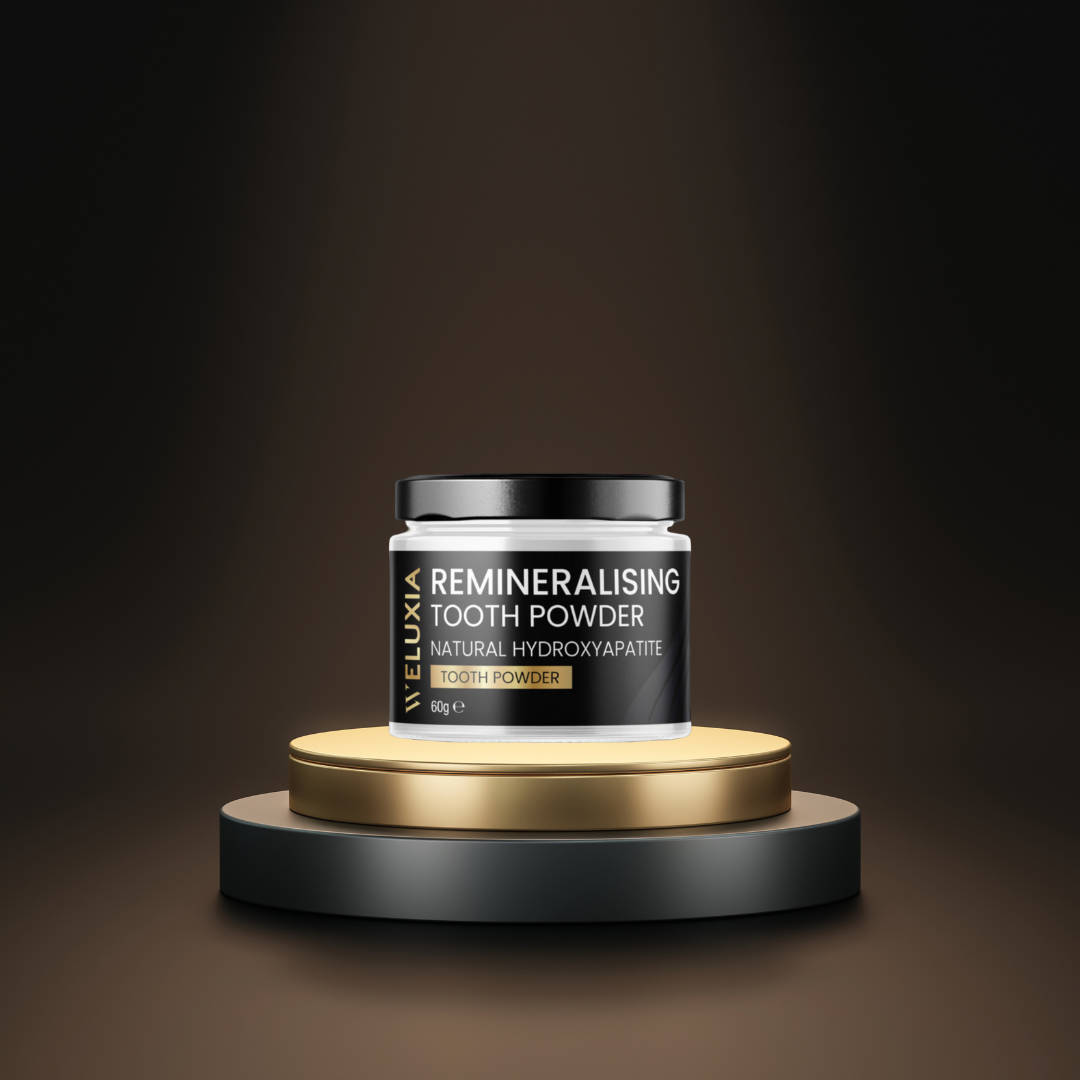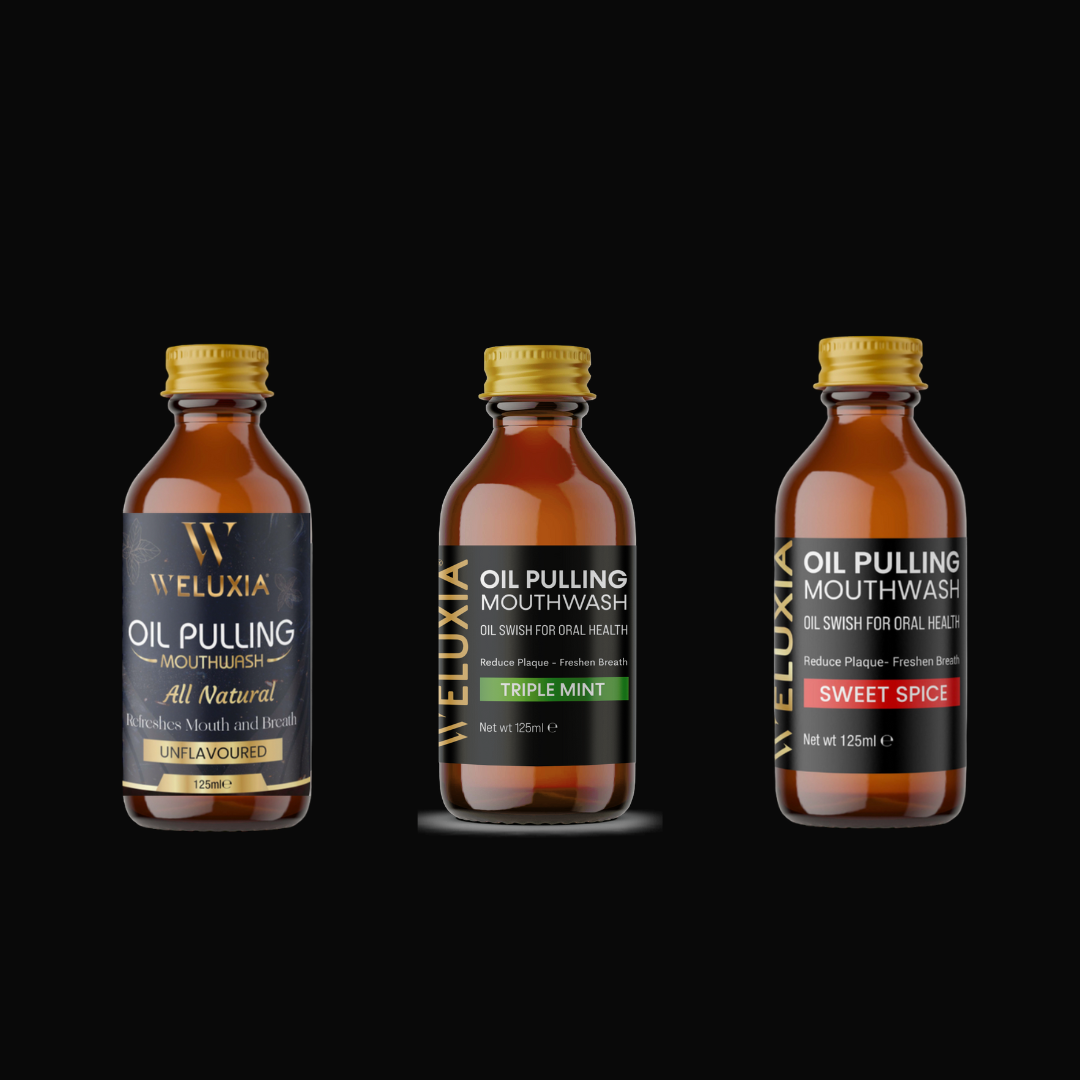A comparison between nano-hydroxyapatite and natural hydroxyapatite, including their composition, penetration capabilities, and potential applications in dental and orthopaedic fields.
Nano Hydroxyapatite vs Hydroxyapatite | Benefits Explained| Weluxia
Nano-hydroxyapatite, is a man-made crystalline substance, which finds frequent application in dental and orthopaedic contexts.
Beyond its established uses, it serves as a viable calcium source for addressing osteoporosis, contributing to the reduction of bone tissue degradation. Natural Hydroxyapatite comes from mammalian bones, fish bone and scale, shells, plants and mineral sources.
In this article, we will delve into the composition and characteristics of nano-hydroxyapatite in comparison to its precursor, hydroxyapatite.
Nano Hydroxyapatite IUPAC: Pentacalcium hydroxide triphosphate
Hydroxyapatite(nano)is a synthetic and inorganic hydroxyapatite. Nano-hydroxyapatite is produced by taking calcium phosphate and phosphate ions and dissolving them into a solution modified to keep the particles small. The solution is then coated onto a dental implant or another medical device, producing a rigid surface that will not wear down as quickly as natural bone or is created to add to a solution in toothpastes. The resulting material may lack various important ions, such as magnesium, natrium, potassium, silicon, strontium, and iron.
Nano-Hydroxyapatite vs Hydroxyapatite: Exploring the Differences
The distinction between nano-hydroxyapatite and conventional hydroxyapatite lies in the molecular size of the product and its skin-penetrating capabilities. In terms of penetration, nano-hydroxyapatite boasts a higher calcium percentage compared to regular hydroxyapatite. This characteristic translates to deeper skin penetration when applied topically, facilitated by its smaller molecular structure, which enhances absorption into the body.
A previous study revealed that synthetic hydroxyapatite is far less biodegradable than tricalcium phosphate and natural hydroxyapatite. The superiority of hydroxyapatite from natural origins makes it more desirable for biomedical applications.
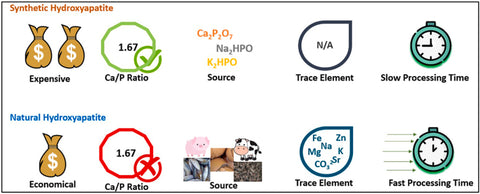
Natural Hydroxyapatite
Animal by-product sources from mammalian bones such as porcine, bovine, and ostrich, fish bone and scale, as well as shells (eggs and marine), are primarily comprised of organic and inorganic material. They have been widely utilized as sources of natural hydroxyapatite. Before the discovery of nano materials natural forms of hydroxyapatite was the fundamental material used in bone tissue regeneration and dentistry due to their biological similarity in natural mineral component. Mammalian bones - for instance, porcine, bovine and ostrich have been used as hydroxyapatite sources as they are rich in calcium phosphate
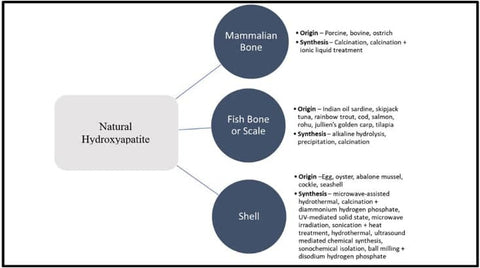
Early studies on the characteristics of hydroxyapatite produced from eggshell and fish bone have yielded encouraging findings [98, 100, 101, 102, 103].
The European Union (EU) banned using nano-hydroxyapatite in cosmetics years ago. The EU was concerned that the skin could absorb the tiny particles and accumulate in organs, with unknown consequences.
SCCS considers Hydroxyapatite (nano) safe IF used at concentrations up to 10% in toothpaste, and up to 0.465% in mouthwash. The conclusions only apply to the substance with the following characteristics:
- Composed of rod-shaped particles of which at least 95.8% (in particle number) have an aspect ratio less than 3, and the remaining 4.2% have an aspect ratio not exceeding 4.9.
- The particles are not coated or surface modified.
In our assessment, nano-Hydroxyapatite (nano-HA) faced two notable drawbacks:
Excessive Particle Size: The minuscule size of the particles allowed the molecule to effortlessly traverse the entire body, including critical barriers like the blood-brain barrier and even penetrate cellular structures. Emerging literature raised concerns about the safety of such widespread migration.
Synthetic Production: Another drawback was the synthetic origin of nanoparticles. Unlike naturally derived alternatives, nano-HA is artificially produced. This distinction became a focal point, as concerns regarding the safety and potential long-term effects of synthetically manufactured nanoparticles gained attention in various scientific discussions.
These factors prompted a critical examination of the safety and sustainability aspects associated with nano-Hydroxyapatite, urging a cautious approach in its utilization.
At Weluxia we have chosen to refrain from incorporating nano-Hydroxyapatite until comprehensive evidence guaranteed its long-term safety. Our commitment to a holistic well-being dictates a cautious approach, ensuring that any substance or material introduced aligns with our health mission.
This conscientious stance reflects our dedication to prioritizing the health and longevity of those engaging with our products or services.
References
Impact of a non-fluoridated microcrystalline hydroxyapatite dentifrice on enamel caries progression in highly caries-susceptible orthodontic patients: A randomized, controlled 6-month trial- https://pubmed.ncbi.nlm.nih.gov/30701704/
https://pubmed.ncbi.nlm.nih.gov/29376480/
EU’s Scientific Committee on Consumer Safety (SCCS).


